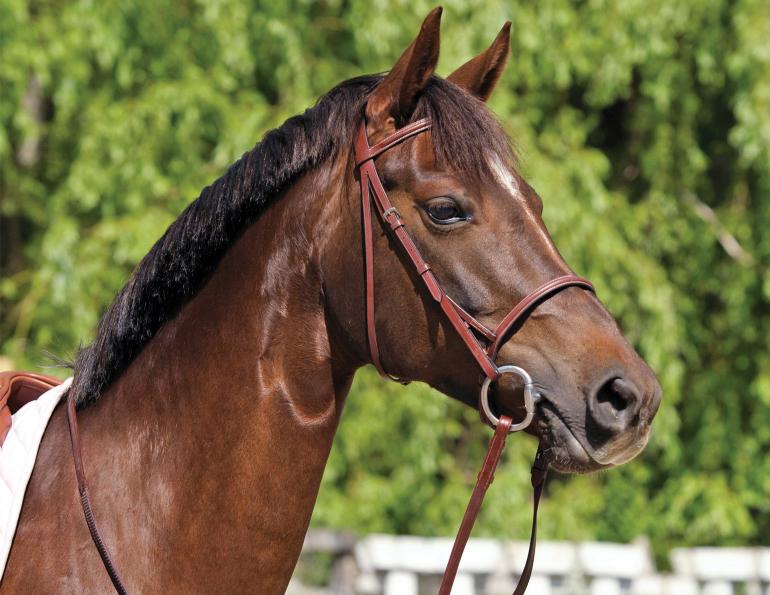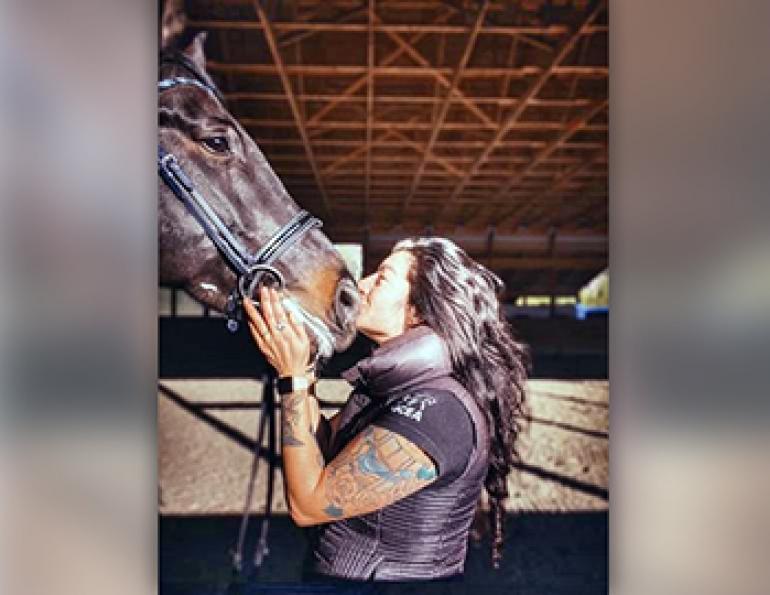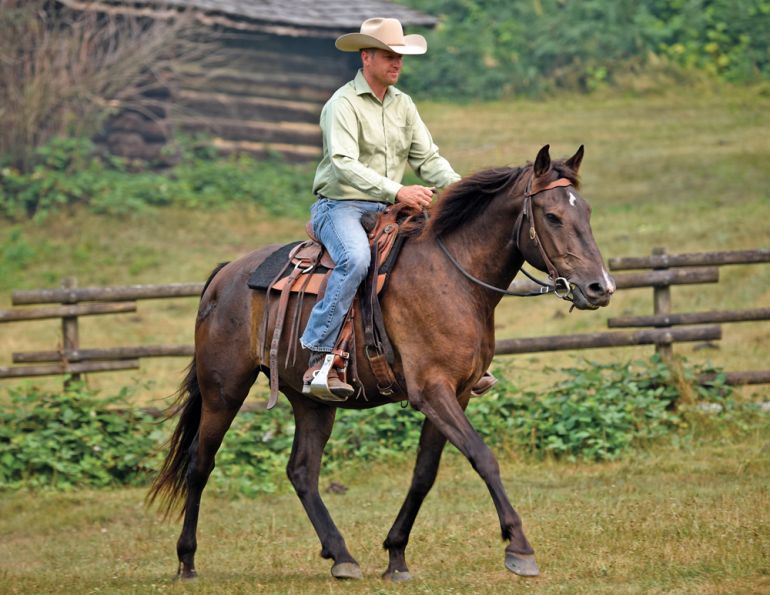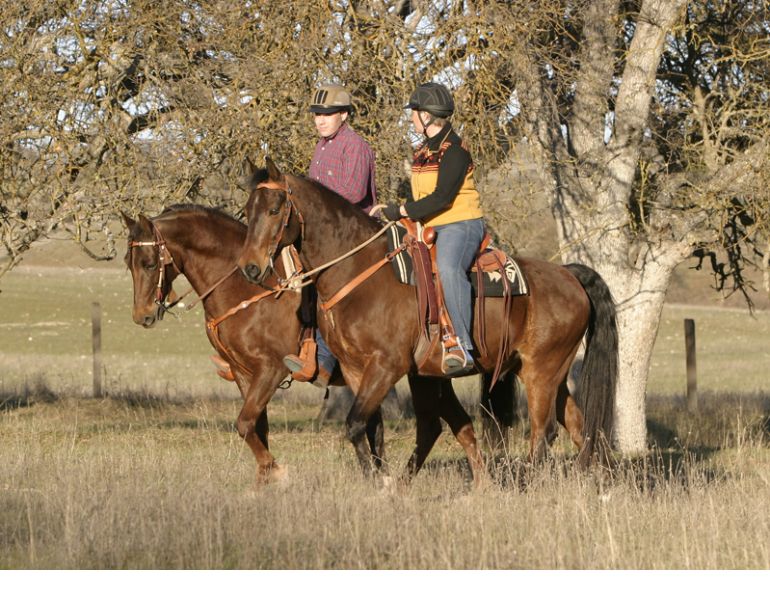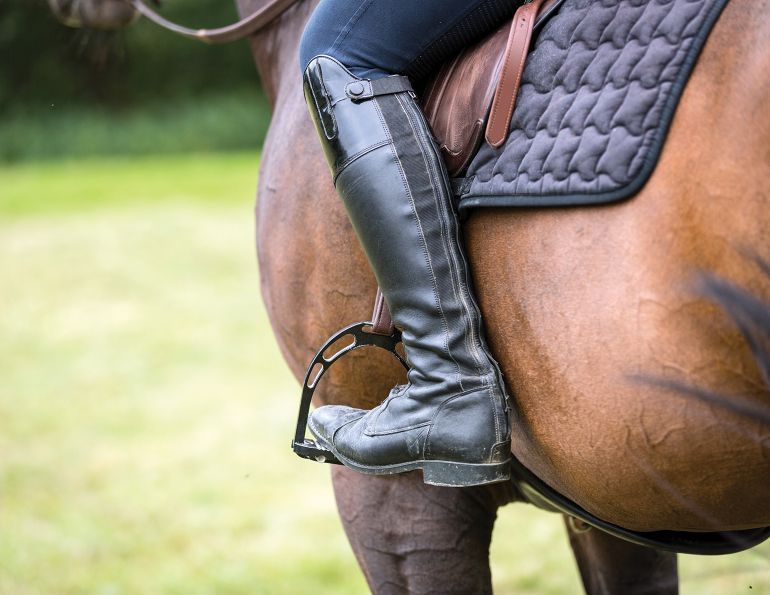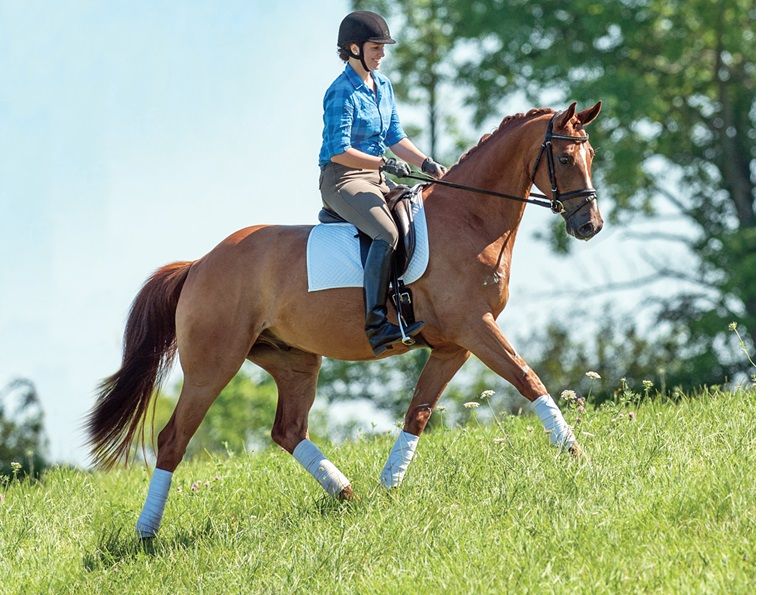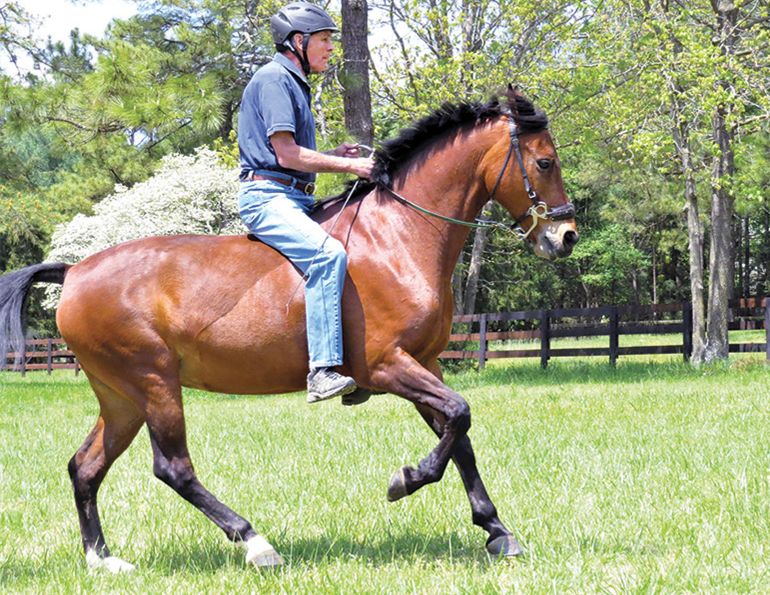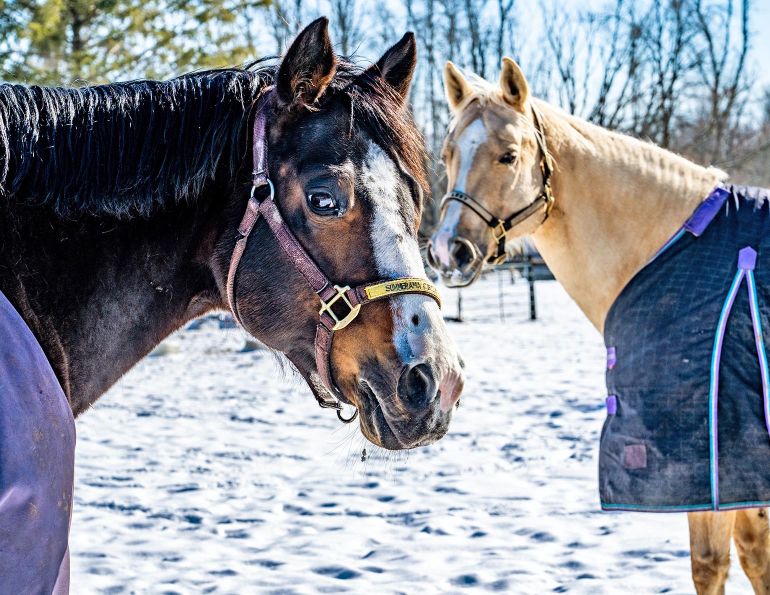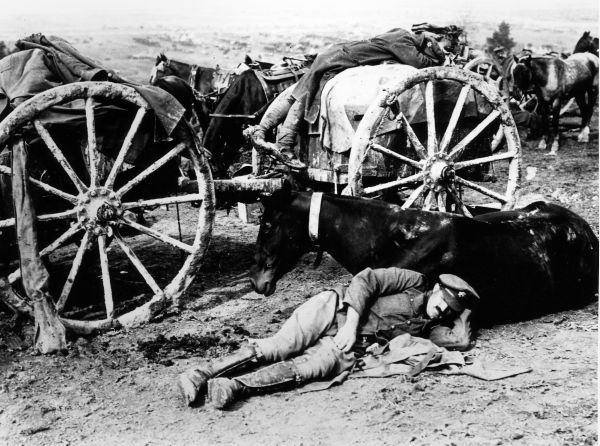By Lindsay Grice, Equestrian Canada coach and judge
Not long ago, I toured a Western art museum and found myself absorbed in the works of Russell and Remington. Their paintings, alive with movement, depicted the unforgiving life of the cowboy — scenes filled with dust, tension, and the raw energy of untamed horses. These animals, used for transport and survival, stood in stark contrast to the roles horses now occupy in our world — companions in leisure, competitors in sport, and trusted partners in training. But one detail in every piece caught my attention and left me uneasy: riders with rigid hands pulling back, and horses resisting, mouths wide in distress.
Although such extreme images are rare in modern riding, subtler signs of resistance still occur — head tossing, bracing, delayed responses. Each one is a signal that something is off in the communication between horse and rider, and these small issues deserve attention if we hope to cultivate softness and responsiveness.
True riding isn’t about force — it’s about clarity. It relies on a thoughtful exchange: the rider applies a specific pressure, and the horse offers a corresponding reaction. Rein use becomes a form of language. Through them, we ask for direction, pace, or flexion. I frequently prompt my students to define the rein message they’re sending. Are they using a guiding rein? A steady direct line? Or applying an indirect cue to influence movement differently? This awareness is key to improving both connection and performance.
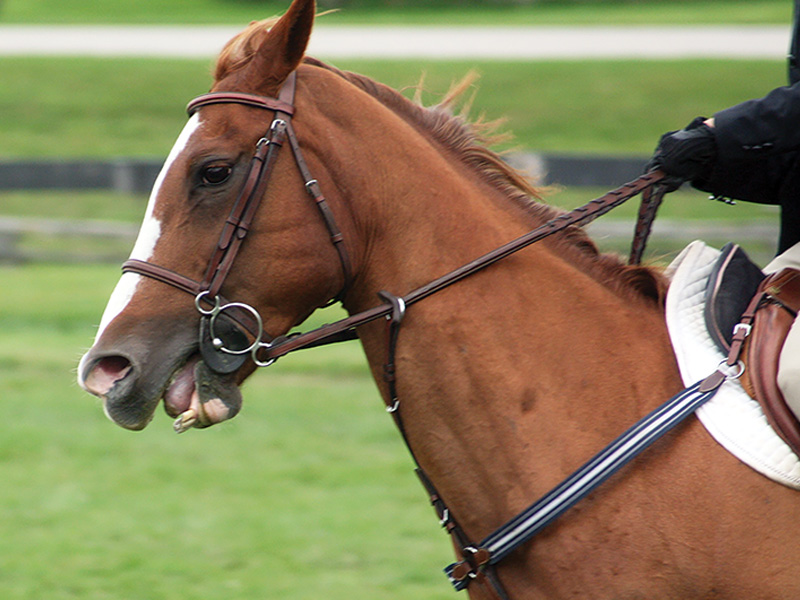
In speed events, riders can get caught up in their strategy, spiking the rein tension as their own adrenaline spikes. Photo courtesy of Lindsay Grice
As your horse responds correctly to each request, you respond with a reward, releasing the pressure and offering freedom. If the horse offers the wrong answer, you keep the pressure steady or even increase it. It’s like a conversation with your horse. By trial and error, he learns that a certain response yields consistent release.
When your horse shows resistance, he’s likely tried a few options to find relief from the pressure and none seem to shut it off.
Are you and your horse communicating? Your horse may signal he’s missing, or resenting, your message in some of the following ways:
1. Dull mouth. Your horse habituates to rein tension if he can’t figure out how to make it go away. He adapts to the pressure by bracing against it or tuning it out altogether.
2. Rooting. The horse opens his mouth and thrusts his head and neck forward, yanking the reins out of the rider’s hands and tugging her out of the saddle. It’s a horse’s frustrated attempt to find peace from the rein pressure. School horses are quick to learn this trick — the unstable body position of a novice rider makes them easy to unseat.
3. Above or behind the bit. By trial and error, a horse discovers that curling behind the contact or raising, even tossing, his head above the contact buys some momentary slack — similar to a drowning person gasping for air above the water line. Alas, an unwanted habit is born.
Related: Finding Solutions for Equine Behavioural Issues
4. Bit evasions. A busy mouth — chomping, gaping, and grinding; rolling the tongue or sliding it over the bit. Horses have a menu of ways to relieve or reposition bit pressure.
Should you try another bit? In some rare cases, a bit change is the magic bullet. In most cases, there’s another source of physical discomfort or confusion overshadowing a bit issue. From watching hundreds of horse and rider conversations, I’m convinced that the hands at the other end of the reins have the most dramatic effect on achieving the light horse. My job as the “bit operator” is to precisely time my release to the behaviour I’m after.
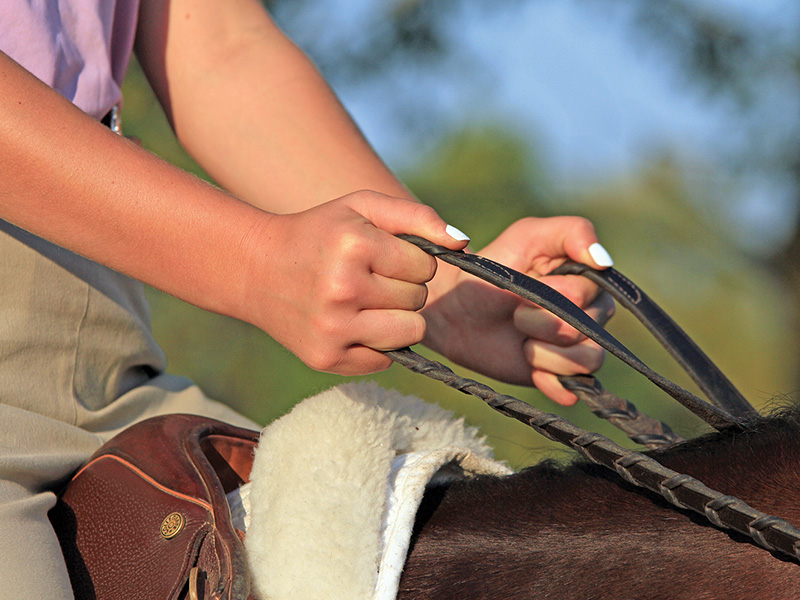
A tense grip blocks the clarity of the message from human to horse. Photo courtesy of Lindsay Grice
Operator Errors, and How to Correct Them
Here are my five most common bit operator errors and suggestions to improve communication between the horse’s mouth and the hands at the other end of the reins:
1. Unsteady hands interfere with the message’s clarity from human to horse. Like Charlie Brown’s teacher, the gist of the message is lost in a garbled “wah-wah.” Novice riders may balance on the reins or spike contact with every stride of posting trot. Others shorten their reins as a nervous habit, or reflexively in planning their next move.
At best, your horse ignores noisy hands, becoming desensitized to the static. At worst, erratic hands will scare your horse. He’ll learn to preserve himself by avoiding the bit in some way. And it’s no picnic trying to develop balance and clarity aboard a rooting, inverted horse — the cycle of confusion rolls on. Keep your hands still! I can still hear my riding school instructor “coaching” me. Like any novice, while I focused on keeping my horse going or identifying the right diagonal, my hands would elevate and bounce around. If your seat is jostling in the saddle, you won’t be able to keep your hands from jostling too. Building core strength and stability from the foundation up is the next step in exiting the confusion cycle.
Renowned show jumper, Bill Steinkraus, said the rider’s position “is a stable platform from which the skilled rider can apply his aids with the precision of a surgeon.”
Related: How to Ride with Quiet Hands
2. Rigid arms. Despite my riding school instructor’s limited explanation, I eventually discovered that still hands come from elastic arms and elastic arms come from supple joints. Strength alone locks your lower back with the jarring effect of a ride in a hay wagon compared to the smoothness of a Cadillac. Learning to follow rather than brace against the horse’s motion builds the secure foundation for delivering your aids with clarity. Imagine holding a cup of coffee and driving over a speed bump. Shock absorbing elasticity keeps you from spilling coffee on your lap. Suppleness in the shoulder, elbow, wrists, and knuckles follows the movement of the horse’s neck in the walk and canter, opening and closing in the posting trot. The same elastic arm helps you follow the motion of the horse’s neck at the canter or over a jump.

Lindsay Grice is demonstrating an elastic rein connection with a straight, soft line from elbow through hand to the bit. Photo courtesy of Lindsay Grice
3. Abrupt aids. These bit operators come in several forms: riders lost in their strategy, spiking the tension as their own adrenaline spikes (think Remington’s cowboys); assertive riders, physically strong and self-confident in the saddle and out; and equestrians who are simply unaware of the signals they send. All styles take a toll on the horses’ welfare.
When I’m judging speed events, I note grabbing reins and gaping mouths more often than I’d like. With speed comes excitement, quick steering, and the will to win. Sadly, for a prey animal, adrenaline triggers a flight response. When a horse is tense, he can’t think, learn, or sometimes even feel. He learns to associate the competition ring as a place of surprise — a scary place. I’ve also noted that in equestrian sport, and I’d venture to say, in all sport, smoother is faster.
Smoothing out communication is NOT jumping numbers on a figurative pressure scale of 1-10. I counsel my riding students to feel their horse’s lips first.
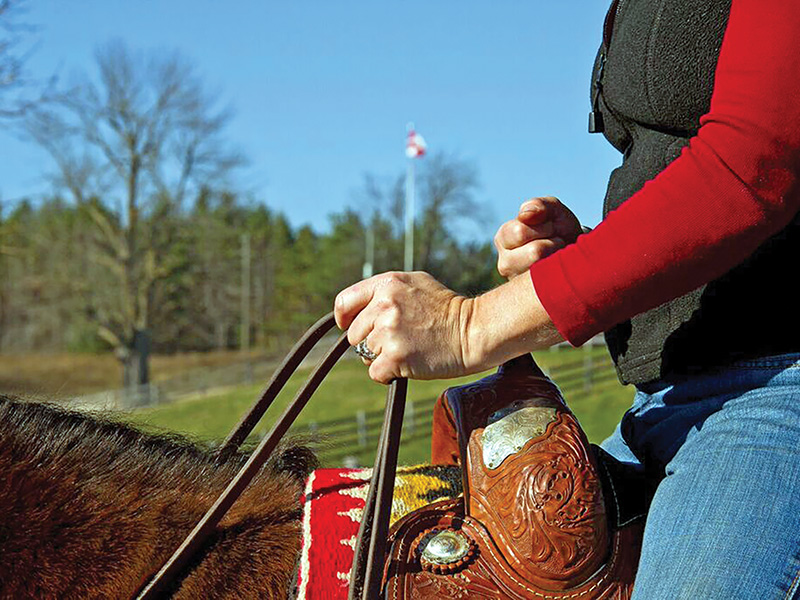
Above: Rigid or abrupt hands will intimidate your horse. He’ll learn to preserve himself by avoiding the bit in some way. Photo courtesy of Lindsay Grice
Below: Suppleness in the shoulder, elbow, wrist and knuckle can follow the movement of the horse’s neck in the walk and lope. Photo courtesy of Lindsay Grice
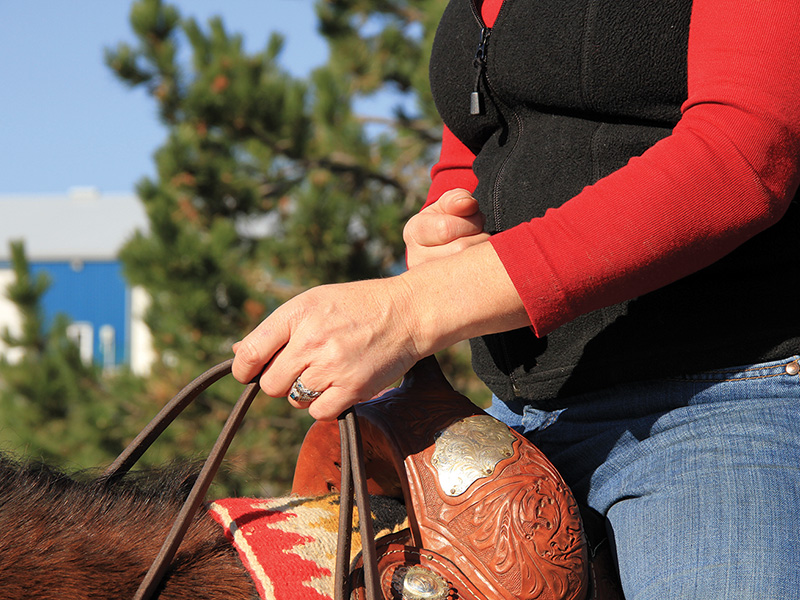
4. Poor timing is missing the moment, or failing to release the pressure when the horse responds. Conversely, by relaxing the pressure when a horse hasn’t responded or responds with the wrong answer, a rider accidently rewards undesirable behaviour.
Related: How to Optimize Your Horse Schooling Sessions
5. Overly firm contact is relentlessly holding the horse in place or in pace. Horses held with tight reins don’t develop self-carriage. Instead, they hide from, or brace against, relentless contact. When a horse’s correct response isn’t rewarded with freedom, he feels trapped with no option to escape the pressure. We owe it to our horses to clearly answer the question: What behaviour will turn off the pressure?
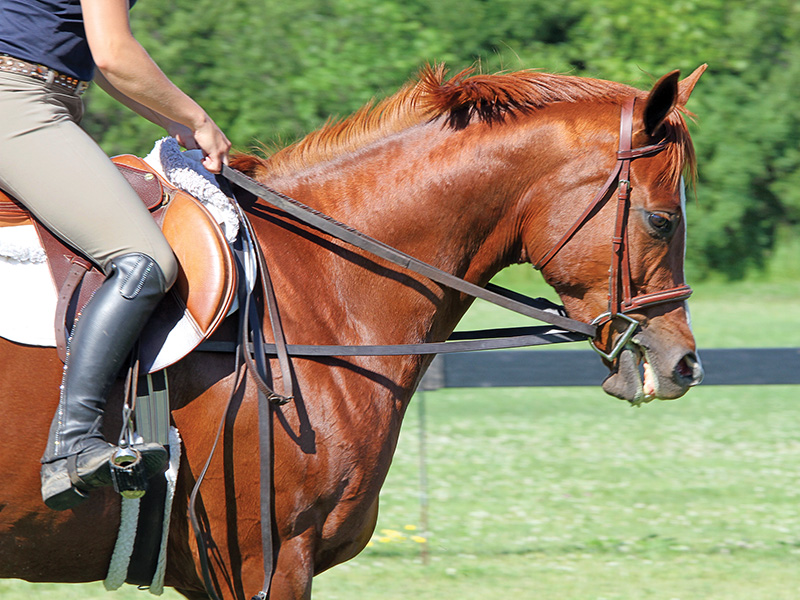
Horses held with relentless, firm contact don’t develop self-carriage. Photo courtesy of Lindsay Grice
What Does Contact Really Mean?
A happy mouth isn’t dependent on loose, “skipping rope” reins. A supple connection to your horse’s lips is a connection to your horse’s attention. He’s tuned-in to each message you transmit. Moreover, contact affords a connection to your horse’s legs. As you generate and funnel energy with your legs and seat into elastic contact, your horse’s body is round and ready to respond, like a coiled spring.
“Soft contact” is the standard set in most equine association rule books. As a judge, I’m required to penalize lack of contact in equitation and some Western classes. Of course, rein contact varies across riding disciplines. Western riders operating with leverage bits will have more visible rein relaxation as shanks return to neutral. Nevertheless, as American Quarter Horse Association (AQHA) horsemanship rules specify: “Reins are adjusted for light contact with the horse’s mouth. At no time shall reins require more than slight hand movement to control the horse.”
Neutral rein contact is an amount your horse doesn’t recognize as a signal — think of child’s hand resting in her father’s as they walk to the mailbox. The aid happens when Dad squeezes the child’s hand to cross the street or to guide around something yucky on the sidewalk.
A Bit About Bits
Most horse people have collected a tack box full of bits in their quest to solve every bit evasion. Fat snaffles, plastic mouthpieces, bits labelled “happy’ or “humane,” and naturally, going bitless, are answers and anecdotes for a kinder solution.
When meeting a rider in a clinic or for a lesson, I typically ask why they’ve chosen their bit or tack. Responses vary from it’s the bit that came with the horse when I bought him; or it’s what everyone’s using; to, honestly, I just like the look of it.
Technology allows researchers to peek inside the equine mouth, noting movements of the bit in relation to the horse’s tongue, teeth, and palate. Now, with a wealth of evidence available to us, we can make wiser bit choices — by analysis, not by accident.
Before heading to the tack store for a different bit, ask yourself:
- Does my horse completely grasp my system of signals and associated responses?
- Am I delivering my message skillfully?
- Do I understand the mechanics of how this bit works and on which parts of the horse’s mouth?
If the answer to these questions is yes, only then explore a different choice of bit.
Stepping up the bit level for a horse that hasn’t mastered the basics is only amplifying signals he doesn’t fully understand. It’s like using a megaphone to communicate a foreign language. Louder isn’t clearer — it’s just scarier. Regardless of the bit, our ultimate goal is to use a whisper — the lightest of pressures.
Bits have found their way out of stable tack rooms into the idioms of common culture: chomping at the bit, clenching the bit, and stiff-necked paint a powerful picture in literature and evoke emotion in art. But they’re not the picture we hope for in our horse and rider partnerships.
Related: The Science of Tack & Training Aids
Related: Adventures in Bitless Riding
Main Photo: Clix Photography



